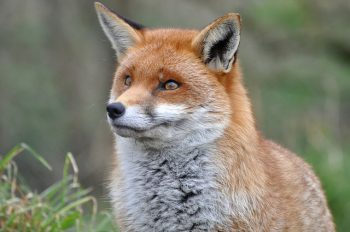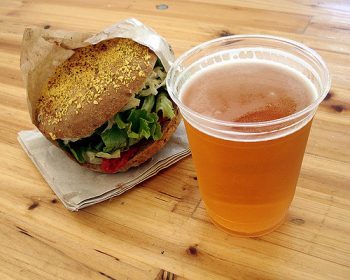
(Photo courtesy of Neil McIntosh at Flickr, CC License.)
Isn’t it fun that @ is called elephant’s trunk A (snabel-a) in Danish? 🙂 While I’m sure that other languages use animal expressions too, I love the way dyr (animals) keep popping up in dansk:
- If something costs en hund (a dog), you’ll have to betale (pay) et hundrede kroner (100 Kroner). Did you get the pun? 🙂
- A tudse (toad), on the other hand, is slang for et tusinde kroner (1000 Kroner), as in Det kostede kun en tudse (It only cost 1000 Kroner).
- Pay attention if your friend har en ræv bag øret (”has a fox behind the ear”). That means she’s probably up to some tricks… If she’s got en bjørn på (a bear on), however, she’s merely drunk.
- If you want to help somebody install an app and end up making a mess of everything, you’re really doing them a bjørnetjeneste (bear service = ”disservice with good intentions”). Some old folks complain that some young folks have flip-flopped the word, making it mean ”friendly favour” instead. (But that’s still not ”official Danish”!)
- When something spooky’s going on, you can say Der er ugler i mosen! (”There are owls in the bog!” When there were still packs of wolves roaming Denmark, I’ve heard, people used to say ”there are ulve…” – which makes a bit more sense!)
- Do you like to make dog-ears in your bøger (books)? In Danish, for some reason, they’re called ”donkey-ears” (æselører).
- Gåsevin (goose wine) is a fun way of saying vand (water). According to media, the Danish PM Lars Løkke would rather drink a fadbamse (draught [teddy] bear), which is slang for ”draught beer”.

A fadbamse and some food. (Photo courtesy of Benno Hansen at Flickr, CC License.)
My own favourite animal expression in Danish is hestens fødselsdag (the horse’s birthday). It’s sometimes used as a fun remark to someone who’s cut a slice of rugbrød (rye bread) so thick that only a horse can chew it! 🙂 Birthdays and rye bread and humour combined – can anything be more Danish?
Do you know some fun expressions involving animals, in Danish or your own language?







Comments:
Jens Søeborg:
Fuglen er fløjet – the bird has flown – the criminal has disappeared
Jeg hørte en fugl synge om – I heard a bird sing about – I heard the rumor
Han har rotter på loftet – he has rats on the attic – he is crasy
Der røg en rotte i fælden – A rat was trapped – We got a customer
Han var hønefuld – he was chicken-drunk – he was totally drunk
Fuld som en allike – Drunk like a Jackdaw – the same as above
Pingvinerne danser på gulvet – Pinguins dancing on the floor – Here is very cold
Her er hundekoldt – Here is dogs-cold – Here is very cold
Han er stæreblind – he is starling-blind – he is totally blind
Hun er en kropsdue – She is a body-pigeon – She is good looking but a bit chuppy
Det var kattens! – That was the cats – I am really surprised
En hønemor – a chickens mother – one who cares a lot and worry a bit for her children
Tina Amalie Christoffersen:
“Der er ingen ko på isen”…….. “There is no cow on the ice”………… Meaning: There is no danger. But also used when “This is no issue/problem to me”..
“Klap lige hesten”.. “Clap the horse”…… Meaning: Take a break. But can also mean shut up.
“Så er den ged barberet”.. “Now the goat is shaven”… Meaning: There is nothing more to discuss.
Mars:
If you have come far out in the country, you are “hvor kragerne vender” (where the crows return).
Bjørn A. Bojesen:
@Mars @Mars, Jens, Tina – Thank you for all the nice animal expressions! 🙂 Tak for alle de fine udtryk med dyr!